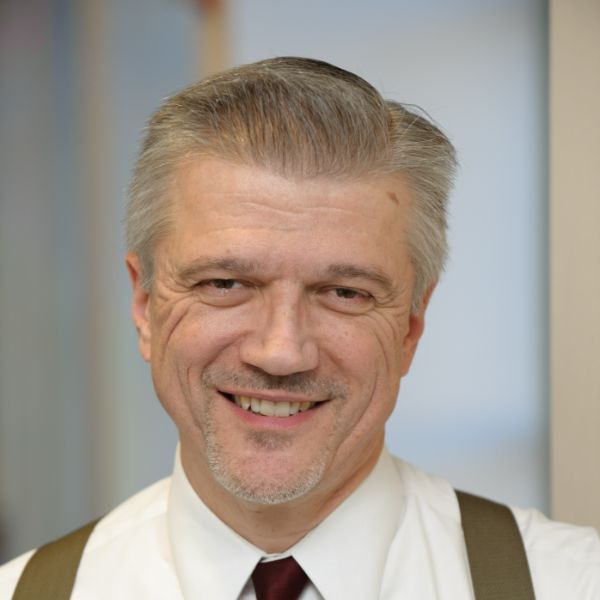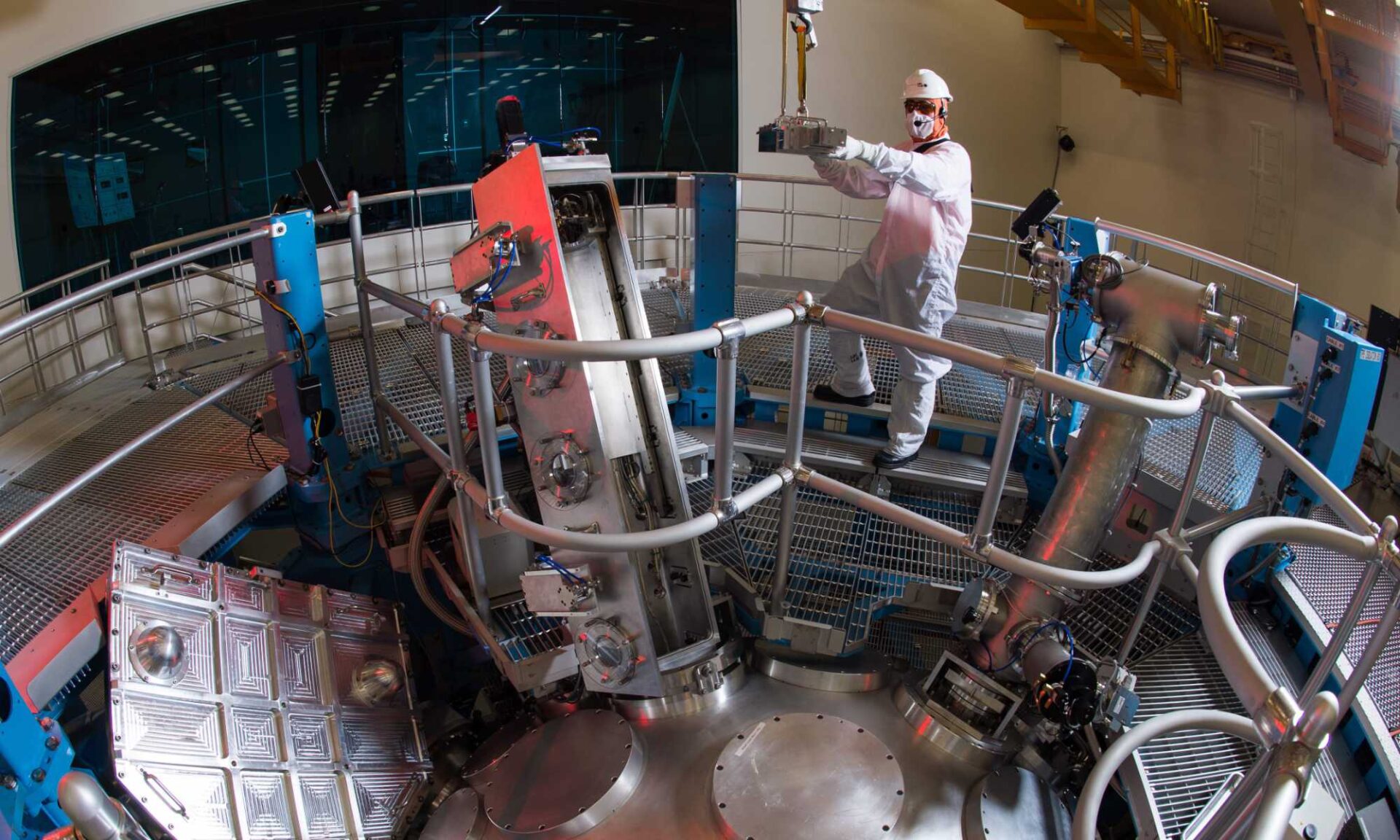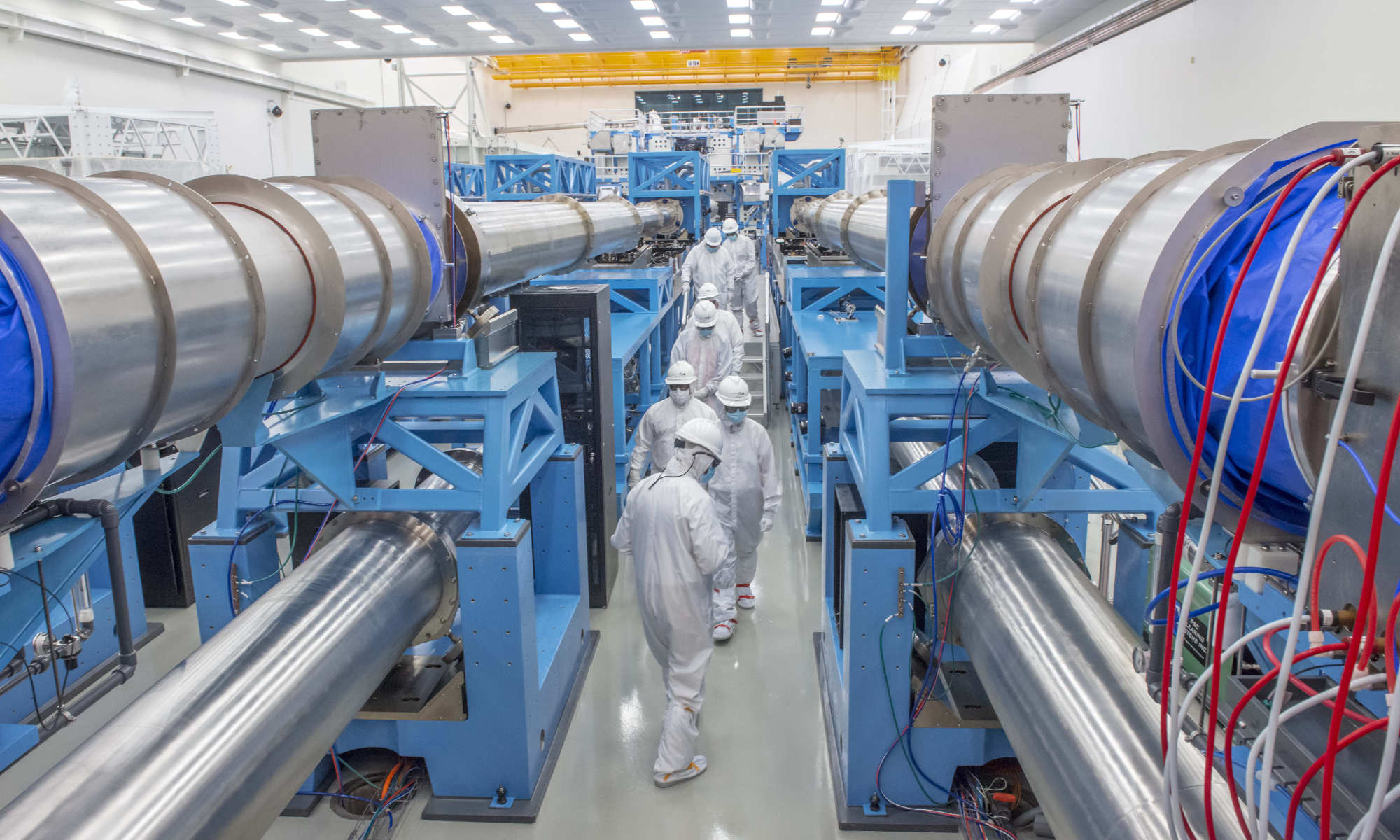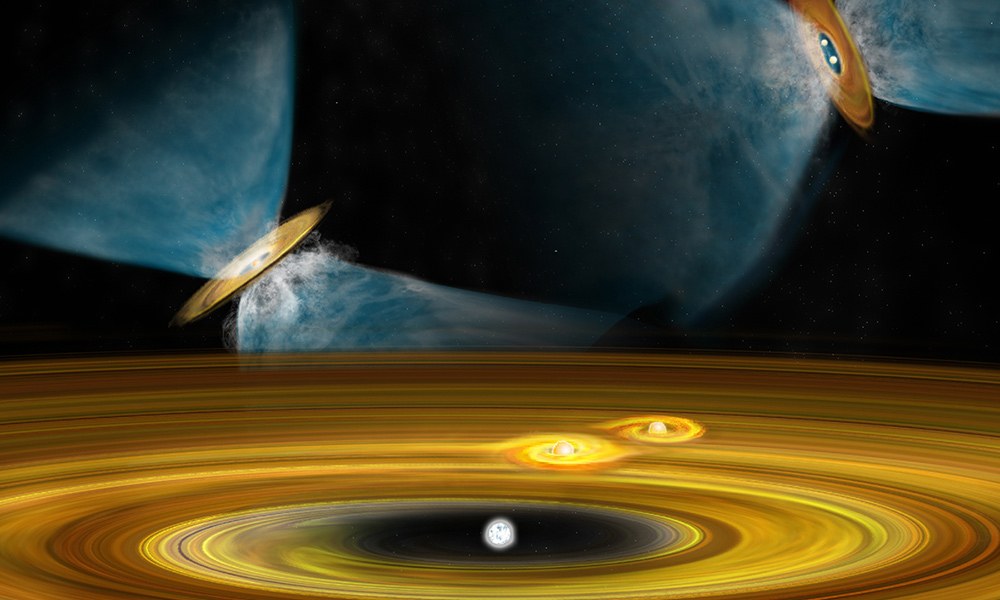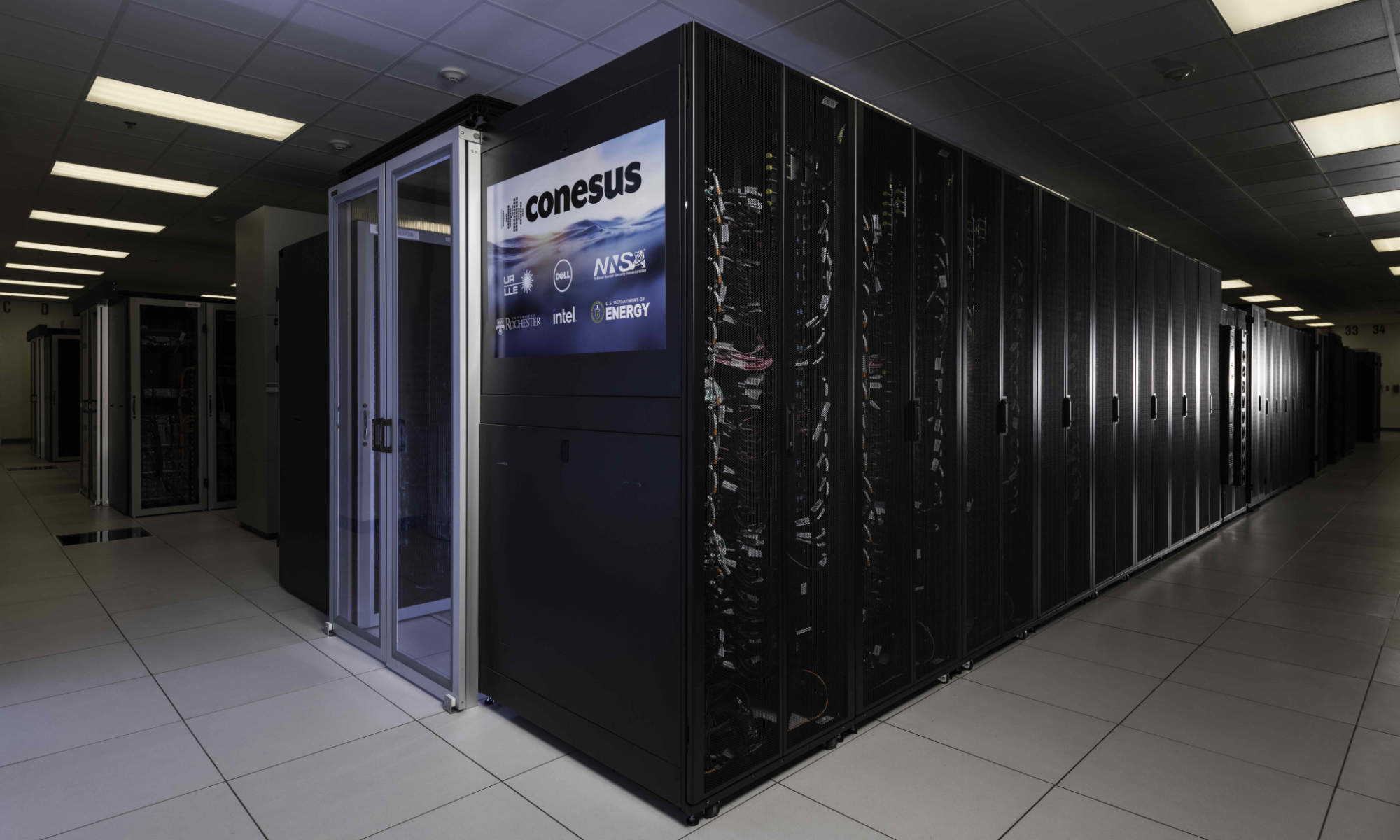The funding enables LLE’s national security efforts in inertial confinement fusion, high-energy-density physics research, and laser technology development.
The University of Rochester’s Laboratory for Laser Energetics (LLE) will receive $99.4 million in federal funding from the US Department of Energy’s National Nuclear Security Administration’s (NNSA) Inertial Confinement Fusion (ICF) program for its Omega Laser Facility for the 2024 fiscal year. The funding was included in a “minibus” package of six appropriations bills approved by both houses of Congress and signed into law by President Biden.
“At the forefront of laser fusion and high-energy-density-science research for more than 50 years, the University of Rochester’s Laboratory for Laser Energetics is internationally recognized for developing innovative technologies and scientific breakthroughs,” says University President Sarah Mangelsdorf. “I especially want to thank Senator Schumer, Senator Gillibrand, and Representative Morelle for their longstanding support and tremendous efforts on behalf of the University of Rochester. Their leadership to secure record funding for LLE will enable important research critical to both our national security and to help solve one of the greatest challenges of our future, harnessing fusion to power an ever better and more secure future. I also want to recognize and thank Representative Langworthy, Representative Tenney, and the other members of the New York Congressional delegation for their support.”
The new funding will be used to conduct ICF research in support of the NNSA’s Stockpile Stewardship and Management Program, which maintains the safety, security, and effectiveness of the US nuclear deterrent. Additionally, the funding will allow the facility to continue its work toward advancing research into fusion and understanding matter at extreme conditions, for example, at the pressures of giant planets. The increased funding is to sustain the two largest lasers at a university anywhere in the world, ensuring researchers can access these facilities well into the 2030s.
“Every year, our facilities conduct 80 percent of the NNSA’s sponsored high-energy-density and fusion shots for the national laboratories’ and other academic researchers,” says Chris Deeney, director of LLE. More than half of the 2,100 experiments each year are conducted by 100 national and international researchers who visit Rochester to add their vibrancy and productivity to the work being conducted by LLE’s own scientific and engineering team. LLE’s operational teams maintain the facilities to a very high standard despite the two facilities now being almost 30 and 20 years old. “The increased investment in LLE will ensure experimenters have a high-quality facility not only in 2024, but also in 2034 and beyond,” Deeney says.
LLE is the largest university-based US Department of Energy program and hosts the Omega Laser Facility, which houses the two largest and most capable academic lasers in the world. Rochester’s Omega Laser Facility is one of the nation’s three primary ICF and high-energy-density (HED) science facilities, along with the National Ignition Facility at Lawrence Livermore National Laboratory and the Z Pulsed Power Facility at Sandia National Laboratories.
Federal funding also supports LLE’s efforts to maintain a highly skilled workforce. Uniquely based at an academic institution for its size, the Omega Laser Facility is the only major (i.e., tens of kiloJoules) facility that trains graduate students in ICF and HED science. As such, the OMEGA Facility plays a critical role as a pipeline for attracting the talented scientists and engineers who make up the future national security workforce, a need highlighted in the 2023 National Academies Report, “Fundamental Research in High Energy Density Science.”
Support from government officials
Elected officials expressed their support for the federal funding, which they helped secure:
US Senator Charles Schumer: “I am proud to deliver this $99.4 million boost in funding for Rochester’s Omega Laser Facility to ensure the over 1,000 local workers supported by the lab including the 450 scientists, engineers, and others directly employed at the lab can stay laser-focused on continuing their groundbreaking energy research and keeping America’s nuclear stockpile safe. The University of Rochester Laser Lab research is essential for our national security and is vital to our regional economy, employing hundreds of scientists and bringing millions into the Rochester area every year. As majority leader, I am proud to secure this funding and will always fight to advance America’s energy leadership, protect our global technological competitiveness, and ensure Upstate New York has the federal resources to lead the nation in scientific discovery.”
US Senator Kirsten Gillibrand: “As a longtime advocate for the University of Rochester’s Laboratory for Laser Energetics (LLE), I’m proud to have helped secure $99.4 million for this facility. LLE is a unique asset for the nation and for Upstate New York, and I am eager to see the continued success of the NNSA partnership. LLE serves a critical role, operating on the front lines of research that contributes greatly to our national security. With continued research in inertial confinement fusion, the university has the potential to lead on groundbreaking applications in clean energy, and I look forward to the breakthroughs to come.”
US Representative Joe Morelle: “The Laboratory for Laser Energetics has cemented its place as a world-class institution and leader in innovative scientific research. I am proud to be a longstanding champion of the University of Rochester’s work to support the future of our community, and this $99.4 million in federal funding I helped secure will allow them to continue doing just that. Congratulations to the University of Rochester on this exciting announcement, and I cannot wait to see all the amazing discoveries in inertial confinement fusion and other scientific fields that result from this investment.”
About the University’s Laser Lab
LLE was established at the University in 1970 and is the largest US Department of Energy university-based research program in the nation supported by the National Nuclear Security Administration as an integral part of its Stockpile Stewardship Program. The LLE also receives annual support from the State of New York.
As a center for the investigation of the interaction of intense radiation with matter, LLE is a unique national resource for research and education in science and technology. Current research includes exploring fusion for national security and as a future source of energy, developing new laser and materials technologies, and better understanding high-energy-density phenomena. In addition to its vital roles in various areas of scientific research and its support of the local high-tech economy, LLE plays an important role in educating the next generation of scientists and engineers.
As the DOE National Laser Users’ Facility (NLUF), LLE hosts scientists and students from across the nation and around the world to carry out fundamental research, training, and education. Additional facility access for qualified external researchers is made possible through LLE’s participation in LaserNetUS.

